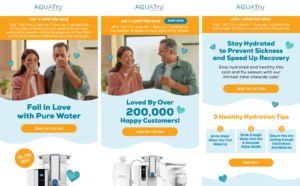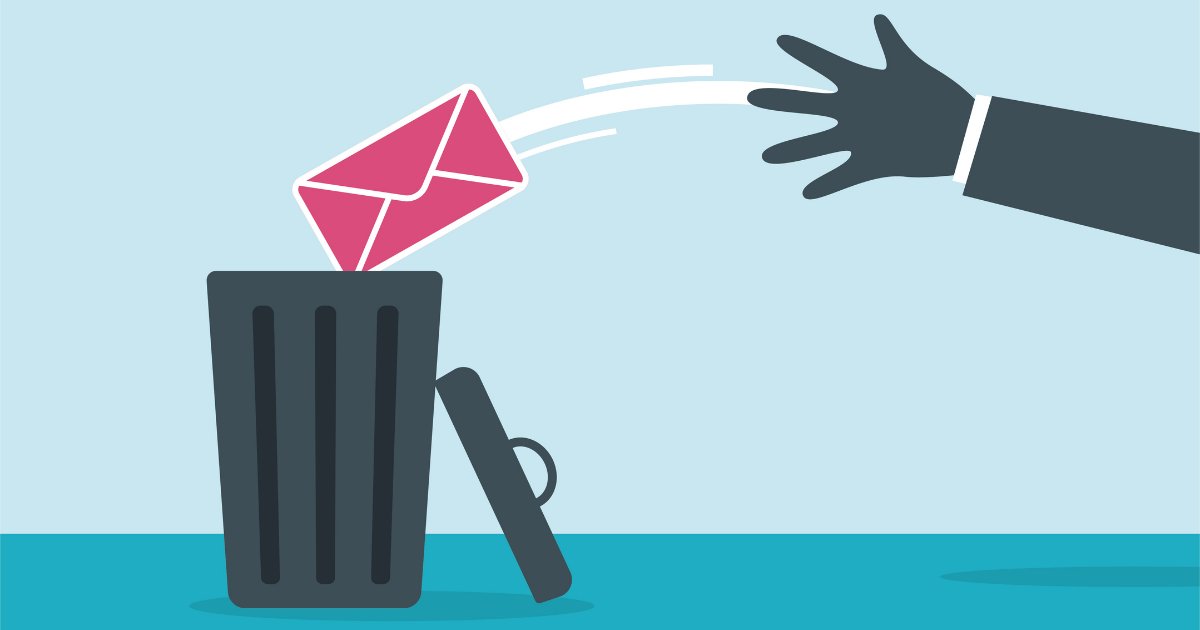When it comes to email, the long tail is very long and very powerful indeed. Typically, 25% of the sales generated by a single email campaign happen more than 3 weeks after it was sent out, according to our research. The half-life of your open and click response can be measured in hours – typically 24-48 hours – but when it comes to sales the half-life of an email campaign isn’t measured in hours but in days – typically a week or more. Which means, of course, that not all clicks are the same. An old click is worth more than a new click: the later the click happens, the more value it has. This startling finding has many significant implications, especially for A-B testing and attribution. And it could radically change the way you measure and manage campaign performance.
The implication for A-B testing
Most A-B tests conducted cut off within a few hours – a couple of days at most – which makes it very hard to spot a winner when the full revenue results don’t reveal themselves for days. There’s every chance that the best performing email at noon on Monday, when the test cuts off, would not prove to be the best money-maker by end of the 2nd or 3rd week, when the true sales picture is beginning to emerge.
The implication for budget allocation
The same issue affects resource allocation. If the attribution metric shuts off after too short a time period, many of the sales a particular email campaign generates may be lost to another channel or end up in the bucket marked ‘unknown’. This could well mean that your email campaigns are getting only a proportion of the true credit they deserve. In several cases we’ve seen, email can be shown to have been contributing at least twice the revenue that is attributed to it.
Getting our share of the pie
You could argue that the revenue goes to the business either way, so why does this matter? Because you cannot optimize your multi-channel marketing tactics and strategy if you don’t have a handle on what each channel is really contributing. And because if you could prove that email’s contribution to the bottom line is actually 30%+ of sales and not, say, 15%, then you have the makings of a solid business case for greater investment of budget, resource – and kudos, dammit – in your company’s email function.
How to measure your half-life
We’ve always advocated patience when it comes to maximizing the accuracy of tests and metrics. But sometimes business pressures can make it hard to wait. This is why half-life is such a useful unit. Once you know it, you don’t have to wait through the whole – surprisingly lengthy – sales cycle to get the results you need to show the real difference email makes. Every brand has its own half-life. You can calculate it by going back through your historical data and looking at the average length of time it took for an email to generate 50% of all its eventual revenue. How many campaigns you need to average depends on your frequency – we recommend 10-15 campaigns. So if you send monthly you’ll need at least a year’s worth; if you send daily, a month’s data will be more than ample.
An idea whose time has come
The idea of digital half-life is gaining interest at the moment. A recent blog post by Dave Chaffey, for instance, focuses on research into the longevity of links on various social media channels. The research looks at 1,000 popular links from URL-shortening service bitly and identifies their half-life – the point by which they will receive half the clicks they will ever get. They found the greatest to be YouTube, with a half-life of 7.4 hours. The research also analyzed direct sources of bitly links, which they defined as links used in emails and IMs. Their half-life averaged 3.4 hours, but while that is still higher than Twitter and Facebook, it’s nowhere near the half-life of email campaigns.
Email’s long tail: more about our findings
Bitly’s research naturally focused on clicks, as that’s what their service is all about, but clicks are only part of the story for an email campaign. As suggested in Chaffey’s blog, our analysis confirms that around half the opens and clicks generated occur within around 24 hours of an email being deployed. More importantly, however, a significant proportion of purchases and revenue are generated more than 21 days after a mailing was sent. According to our data, at least 25% of purchases – and over 25% of the revenue generated by an email campaign – are generated more than 3 weeks after deployment. These purchases typically occur on the same day as the most recent click or a few days after, indicating that many are made by subscribers who return to old messages saved in their inbox before purchasing. Our analysis is based on multiple campaigns for various clients, all of which showed the same pattern.

What does this mean for email marketers? If the true performance of an email campaign doesn’t appear for a matter of weeks, how might this affect the way you do things? Here are some action points to consider: Pinpoint your own half-life for each of your key campaign metrics. From now on you’ll be able to estimate what the true impact of your campaigns is likely to be when recipients are given enough time to react and take action. Look back over past campaigns and identify the strategy, content, timing and subject lines that made the biggest impact on your KPIs. Optimize your emails for search. When developing campaigns, keep in mind that subscribers will often return to your emails at a later date – and the later this happens, the more valuable.
So make the content easy to search for or retrieve from the inbox. Make sure the subject line is an intuitive description of the email’s contents. Incorporate keywords in every content element, from headings to links to image tags. And use consistent and logical sender name(s). Ensure any images used are still hosted several months after your mailing has been deployed – up to a year, depending on your estimated half-life. You could even overwrite images to update campaigns with recent promotions or products you now have available. Just bear in mind the alt tags and links as they still need to be relevant – some ESPs will allow you to change the link destination after deployment.
Check hosted links, which can sometimes expire. If your link is automatically generated by your ESP, be sure to check the details. Make it as easy as possible for your subscribers to click via an email directly to your site, so avoiding the competitive environment of a search results page. Watch out for time-sensitive subject lines. Obvious exemptions to the half-life phenomenon include messages with a clearly defined shelf-life – no one clicks on a Valentine’s email on February 17, for instance, or on an offer that closes at midnight Friday 14 on Saturday 15. Unless the time limit is central to the messaging, as with these examples, avoid time-sensitive references in subject lines that could needlessly discourage late clickers.
Think about how one email contributes to another email being opened. If a recipient opens an email 3 or 4 weeks after it was sent, they may have seen 1, 2 or 3 more emails in the interim. Each of these subsequent sendings may have contributed to the open response: your email about a digital TV offer, for instance, may have been clicked only after your email about free delivery and your special offer on beers for Euro 2012 were also deployed. Think how you can use your emails to nudge subscribers towards opens in this way? Build your business case. Use your newly enhanced view of the true impact and ROI of your email activity to build the case for securing more resource to the channel.
There’s more to come
Our analysis generated as many questions as it did answers. Like what factors can influence the length of an email’s tail? And what triggers subscribers to go back to old messages to complete a purchase? Knowing the answers to these and other riddles will make it possible to leverage email’s tail to your advantage.In the coming weeks and months, we will be taking ever deeper dives into our client data to uncover the answers. You’ll be the first to know, so look out for upcoming issues of Email Worx.





